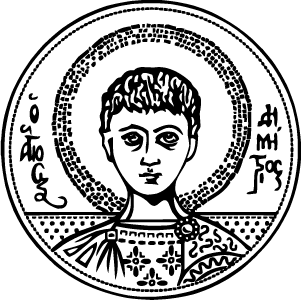Διδάσκοντες:
Faculty Instructor:
ECTS:
Κωδικός Μαθήματος:
Code:
Κύκλος / Επίπεδο:
Cycle / Level:
Υποχρεωτικό / Επιλογής:
Compulsory / Optional:
Περίοδος Διδασκαλίας:
Teaching Period:
Περιεχόμενο Μαθήματος:
Course Content:
Since his first steps on Earth, man has been constantly moving. Migration, voluntary or forced, is a characteristic feature of man over time.
The course is divided into two parts. The first part begins with a mapping of the contemporary refugee and immigration issue and then attempts to explain the phenomenon historically.
It studies the phenomenon from the end of the 19th century with the creation of national states and borders and population movements in Europe as a consequence of persecution (Russia – Jews) or oppression and hunger (Ireland – America). The regional conflicts (Balkan Wars) and the First World War bring to the fore new forms of persecution with population movements that take a dramatic form (ethnic cleansing of Christian populations 1914-1915 in Anatolia, Armenian genocide – 1915). Especially in the Armenian issue, forced displacement is aimed at physical extermination. At the same time, the phenomenon of economic migration to the countries of the new world (America – Canada) and the creation of new societies with multiple cultural characteristics and distinct communities are examined. The Asia Minor Catastrophe and the exchange of populations between Greece and Turkey named the characterization of the “refugee” that would become a distinguishing feature for generations of Greeks.
The Second World War is characterized by massive population movements and the Holocaust of the Jews of Europe. The post-war world creates the need to provide international protection and establish institutions and conventions for the relief of refugees (UNHCR, 1950 – Geneva Convention, 1951).
The course then focuses on the modern era and the globalized world with the constant migration and refugee flows especially in the eastern Mediterranean and Europe. Here the new processes of migration and exploitation by illegal networks of human trafficking and trafficking and the national and European framework for refugee protection and dealing with migration are examined.
Immigrant-refugee flows test the endurance of European societies and give ground to political groups with xenophobic-racist content.
The second part of the course, drawing material from literature, returns to the content of the first six units, illustrating it with selected examples from Greek and world prose. Both fictional narratives (primarily based on real-life stories of immigrants and refugees from the late 19th to early 21st centuries), as well as oral narratives, documents/testimonies, and related essays, reflectively illustrate the historical contexts that were studied in the first part of the course. The literature not only captures the violent movements of populations, forced relocation to new places and the reception of the outsider (refugee or immigrant) by individual local societies/communities, but also introduces a wealth of questions about cultural contexts and experiential/small scale of social phenomena, dimensions that are often lost in public/official history narratives.
The aim of the course is to distinguish the political, economic and social aspects of immigration both in the countries of origin and exit as well as in the countries of first or final reception, the different treatment that exists over time, as well as the ways that literature highlights its multiple aspects phenomenon.
Μαθησιακά Αποτελέσματα:
Learning Outcomes:
Upon successful completion of the course, students will be able to:
– Describe and identify the historical circumstances in which the refugee and migrant phenomenon evolved in the modern world.
– To recognize and critically address the multiple and different historiographical interpretations of this process.
– Learn to study primary historical sources and to produce historical arguments explaining the causes of events, their effects, and their long-term consequences.
– Explain historical continuity and change.
– Understand the importance of collective memory and its management.


 Αριστοτέλειο Πανεπιστήμιο Θεσσαλονίκης
Αριστοτέλειο Πανεπιστήμιο Θεσσαλονίκης